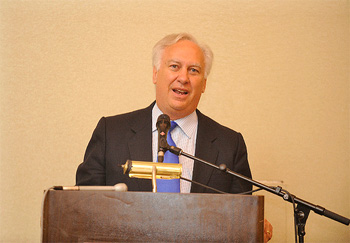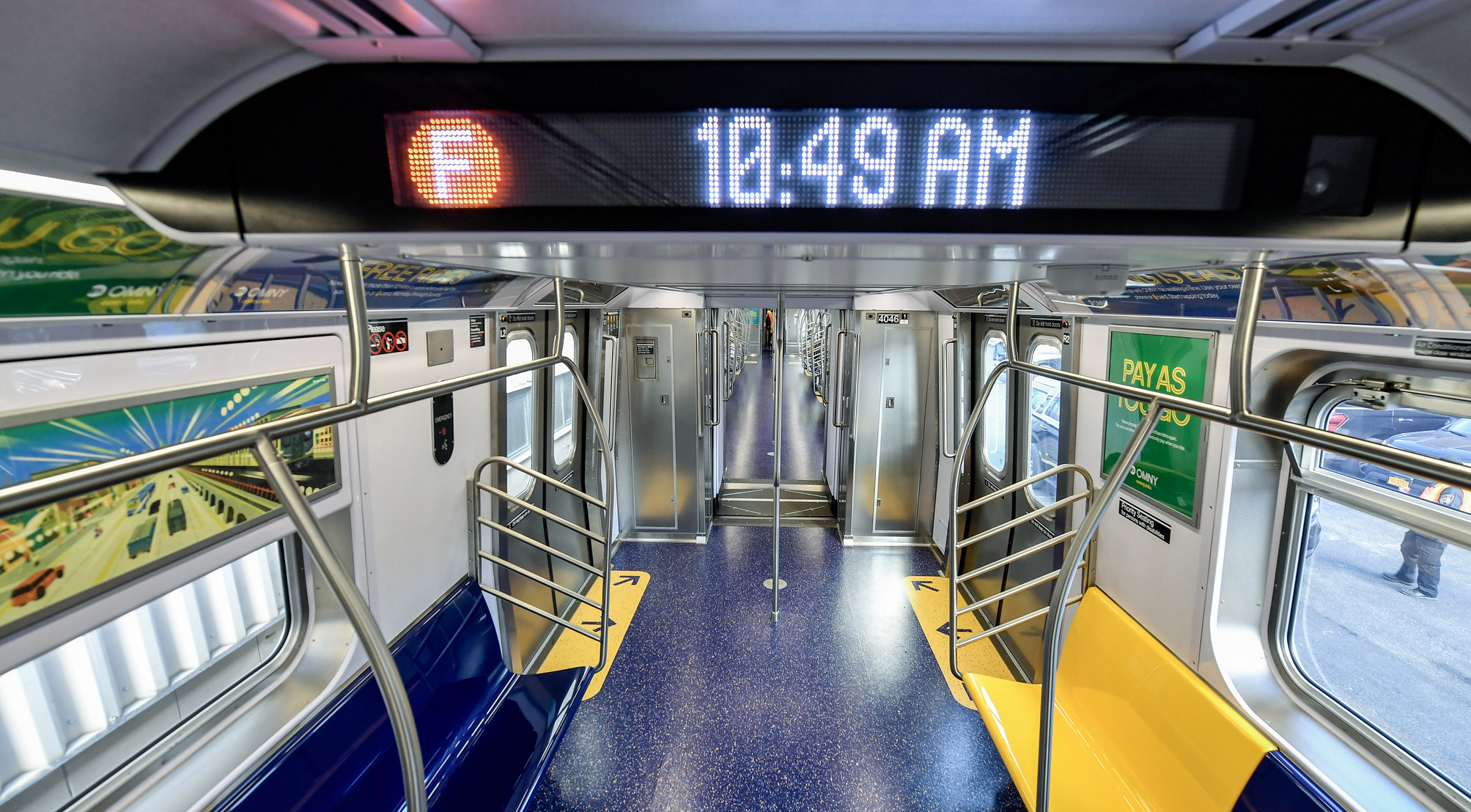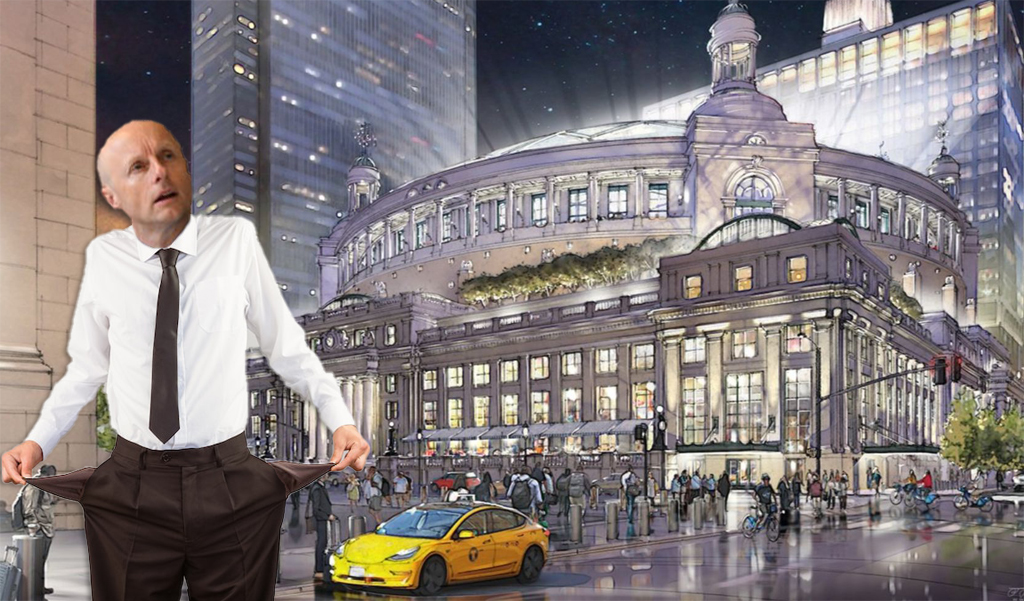“The difficulty lies, not in the new ideas, but in escaping from the old ones,” wrote John Maynard Keynes in his ground-breaking 1935 treatise, "The General Theory of Employment, Interest and Money."
Keynes was bemoaning budget-balancing nostrums that deepened the Great Depression. But the famed economist’s lament applies equally to Richard Brodsky’s exhumation last week of his outdated criticisms of congestion pricing.
Brodsky is the former state legislator who almost single-handedly derailed Mayor Bloomberg’s congestion pricing proposal in 2007-08. He retired in 2010 after nearly three decades representing parts of Westchester County in the State Assembly and carving out a reputation as Albany’s most ardent — and acerbic — champion of progressive economic and environmental policies. Indeed, it was by attacking from the left, as the upholder of egalitarian ideals, that Brodsky outflanked the “billionaire mayor” and defeated his pricing plan.
In truth, though, Brodsky’s objections were overblown, and traffic pricing has evolved considerably since 2008, even as the city and region’s need for transit funding has grown dire. But you’d never know that from the shopworn rhetoric Brodsky tossed out last week against Gridlock Sam Schwartz’s traffic plan, in an article in the New York Observer:
You can call a banana “broccoli,” but it’s still a banana. They are looking for answers in the wrong places, still pursuing tolls. Equitable? That’s not equitable.
That’s the short version. Brodsky detailed his “issues” with congestion pricing in the January 2008 minority report of the Traffic Congestion Mitigation Commission (PDF, p. 8):
Four particular facets of the pricing scheme exacerbate the regressivity and unfairness of the Commission's proposal. First, it is a flat fee paid by all regardless of income. Second, those who pay tolls on other facilities are exempted from the fee, intensifying the unfairness because those in NJ, CT, Westchester and LI tend to be wealthier than those in the outer boroughs who must pay the new fee. Third, there are clear wealth distinctions between the outer boroughs and Manhattan [which] increases the regressivity of the scheme. Fourth, the largest single group of contributors to congestion, taxi users, whose average income is higher than the average driver, is largely exempt from the fee.
Of Brodsky’s four issues from 2008, three do not apply to Schwartz’s 2012 plan.
- Under the Schwartz Plan, medallion taxi users will face a 50-cent increase in the drop charge, a 20 percent rise in the mileage charge, and a 30 percent rise in the wait-time charge. The average yellow cab ride will cost $1.50-$2.00 more, raising substantial additional revenue, improving traffic flow, and ensuring Manhattanites contribute their fair share.
- Manhattan residents, who comprise 12 percent of the population of the 12-county MTA region, will pay nearly 24 percent of the net costs of Schwartz’s tolls and fees, well ahead of Queens (19 percent) and Brooklyn (16 percent), thus reversing the pro-Manhattan bias of the original pricing plan (Brodsky’s third objection). This comes via four distinct features of Schwartz’s plan: deep discounts on MTA bridge tolls; dollar bus fares in districts beyond the reach of subways; repealing the partial sales tax exemption for Manhattan monthly garage parkers; and the surcharge on yellow cab fares. And most of the borough’s toll “incidence” will fall on the better-off precincts south of 86th Street rather than on Harlem or Washington Heights.
- The Schwartz Plan rests on toll equalization, not exemptions: every car trip into the Manhattan Central Business District will be charged the same, regardless of origin. Goodbye to Brodsky’s second objection.
Brodsky’s first concern — that the congestion charge doesn’t vary with driver income — does apply to Schwartz’s plan. It also applies to tolls on every MTA and Port Authority crossing, to subway and bus fares, and, in fact, to Yankees tickets, iTunes downloads, gasoline, and the proverbial quart of milk. What distinguishes congestion charging is that its proceeds will go to safeguard and modernize the city’s transportation infrastructure, especially the trains and buses that New York’s 99 percent use far more heavily than the highways and bridges to the CBD. In short, the subtext of Brodsky’s first and strongest objection, that congestion pricing is an assault on the non-rich and powerless by the rich and powerful, doesn’t apply to any pricing plan.
With its substance neutered, Brodsky’s opposition to congestion pricing collapses to a philosophical point he voiced shortly after leaving the legislature, in a private communication I cannot cite but will quote: “It is a pricing mechanism that allocates access to public places on an ability to pay.” Close, but not quite: the public places being tolled aren’t destinations like the Theatre District or Wall Street; they are means to reach those places — roads and bridges to which access has been rationed for generations, based on an ability to suffer gridlock as well as the resources to own and keep a car — and to which there are, for most trips, viable transit alternatives. And with new revenue, the MTA can and must fill the transit gaps that remain for a small portion of outer borough residents.
Keynes died in 1946, the same year Brodsky was born, and a few years before Columbia University economics professor and future Nobel laureate William Vickrey began developing the intellectual and analytical bases of congestion pricing. Like Brodsky, Vickrey was a man of the Left, a Keynesian who believed strongly in deficit spending to fight unemployment.
Vickrey, an inveterate innovator, had little trouble heeding Keynes’ dictum to escape from old ideas. If Brodsky can channel his inner Keynes and free himself of his outmoded antipathies, the path to fixing traffic and financing transit in NYC could get a little smoother.






